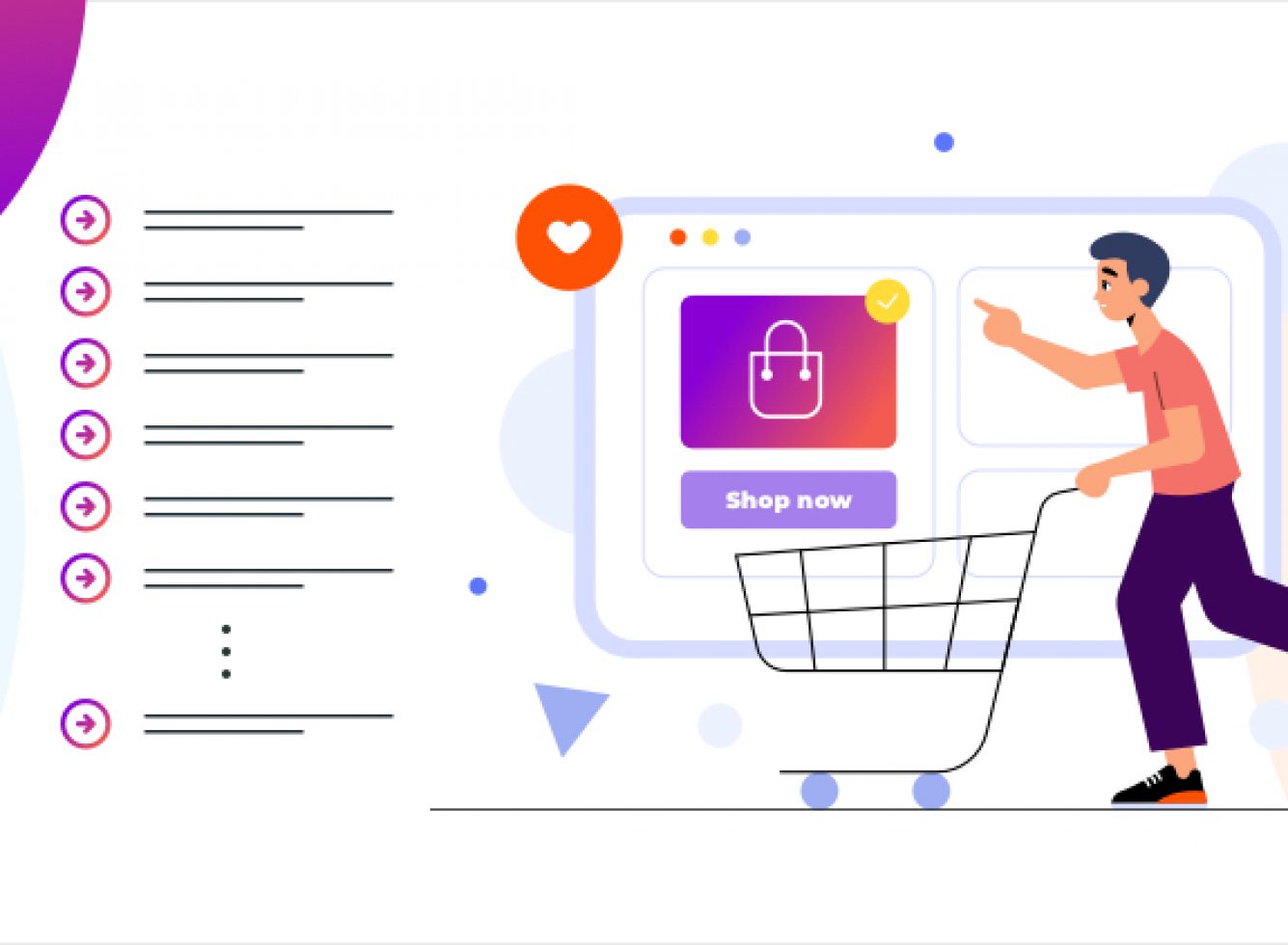14 Best Practices for Ecommerce Conversion Rate Optimisation

What is ecommerce conversion rate optimisation? It’s the reason your ecommerce website exists. Attracting visitors to a website is one thing but it won’t boost the bottom line of your business unless you convert those visitors to customers. Conversion rate optimisation is the art and science of making that happen by working through actions such as adding products to a cart, signing up for an email, filling in contact forms and adding an item to a wish list. Of course, the ultimate aim of all conversion rate optimisation best practices when you’re selling goods is an online sale, and you won’t really know how well your website is functioning until you calculate what its conversion rate is.
In this article we’ll explain some of the ways in which you can take advantage of ecommerce conversion rate optimisation. Tips on how to improve the conversion rate on a website cover virtually every aspect of that site, from the content and the colour scheme to the navigation and the level of interaction. Acting on all of these tips at once may seem extreme – and there’s every chance that you’ve taken some of these steps already – but instigating those that apply to your site incrementally will bring about the conversion rate optimisation your business needs to move to the next level.
Calculating the Ecommerce Conversion Rate
It may sound highly specialised but calculating the conversion rate of your website is actually relatively simple. The figures you need are the number of unique visitors to the site over a specific timeframe, such as 24 hours, and the number of those visitors who engaged in transactions. For example, if your site is visited by 6,000 people over 24 hours, and those visits result in 60 conversions then the conversion rate is 1%. Whether this is an acceptable conversion rate is a decision you have to make, but a useful rule of thumb is to aim for a conversion rate of 2%. Having calculated the overall conversion rate, it is then possible to drill down deeper into the figures to calculate the rate for other factors. These might include:
- First time visitors against repeat visitors
- Visitors on a range of devices such as iPads, smart phones etc.
- Conversion rates for particular products
- Conversion rates over a set period of time such as a week or month
If you’re unhappy with the conversion rate you’re achieving, then the good news is that there’s plenty of things you can do about it. Ecommerce conversion rate optimisation could include any of the following:
High Quality Visuals
Images speak much more directly to potential customers than words, and high-quality images – particularly on product pages – will help to create a professional impression. One of the disadvantages of ecommerce sales when compared to those which take place in bricks and mortar stores is the fact that potential customers don’t get to see, feel and ‘weigh up’ the products they’re buying before making a purchase. High quality images can go some of the way toward bridging this gap. In addition to product images you can utilise the likes of infographics in the form of graphs, charts and other illustrations, all of which are capable of conveying information more quickly and clearly and with greater impact than text.
Make Your Shipping Policies – and Prices – Clear
One of the key advantages of ecommerce is that it turns the entire world into a marketplace. In simple terms, if someone in any corner of the world can access your site, they can make a purchase from you. Since this is the case, you have to deal with the issue of shipping to all parts of the world. One of the things which could put people off purchasing from your site could be the impression – or the reality – that the shipping costs will be too expensive. If visitors to your site don’t find out what the shipping costs are until the very end of the ordering process then the sudden hike in the cost of the product could be enough to put them off completing the order.
It’s far more sensible to include the shipping costs on the product page itself. This is even more advantageous if you’re in a position of being able to offer free shipping. This is something many customers look for, and seeing it emblazoned on your product page could be enough to seal the deal. The same principle applies to your returns policy. If, after crunching the figures, you decide that you can afford to offer free returns, you should make sure that this fact is featured loud and clear on your site; as with all other aspects of ecommerce conversion rate optimisation, multiple small additions can come together to build a huge cumulative effect.
Time Sensitive Offers
The one thing which you want to avoid if possible is people browsing your site, liking the look of what they see, but then deciding they’ll think about it for a while before committing to a purchase. There’s a very real risk that this pause will give them the time to look elsewhere or simply forget about your offering altogether. You can short-circuit this process by instilling a sense of urgency via the use of time sensitive offers or limited period coupons. You could, for example, offer free shipping if a customer converts their purchase in the next five or ten minutes, something which will help to deal with the perennial issue of abandoned shopping carts.
Get the Pricing Right
People are looking for value, that’s a statement of the obvious but it’s one which can safely be assumed to be true. This doesn’t mean, however, that you should cut your profit margins as much as possible to drive the prices to the lowest reasonable point. Not only will this impinge upon your profit margins, it could also have the effect of making customers worry about the quality of your products. What you should do instead is study the market, including your competitors, and price your products to hit the sweet spot which indicates quality but offers value. As long as you’re honest in your descriptions and depictions of your products, customers will appreciate the fairness of your pricing strategy.
Simplify Checkout
All too often, ecommerce websites fall at the very last hurdle, by confronting customers with an overly complex checkout form. Keep yours as simple as possible, structuring it in a manner which is clearly labelled and collects the customer details you need without making the customer feel as if they have to work too hard. One useful means of doing this is to provide a high impact progress indicator which gives a clear and easily seen visual indication as to how far through checkout the customer is at each point. This is particularly useful if the checkout process has multiple steps and will stop the customer feeling as if they are working their way through some never-ending process.
Guest Checkout
Getting guests to register for your account has its advantages, particularly in terms of developing a long-term relationship and making repeat purchases simpler. Forcing it upon every single customer slows the purchase process down, however, placing a barrier in the path of conversion and possibly prompting them to look elsewhere. You can easily avoid this potential issue by offering the option of guest checkout via a social media platform or email.
Buy Button
Sometimes the tips which enhance ecommerce conversion rate optimisation can seem so obvious that they become easy to overlook. One of these is to feature a highly prominent ‘Buy’ button on the pages of your site. This should be large, brightly coloured and easy to spot. It should be positioned close to the product in question and the overall design of your site should be responsive, which means that it works as well on every individual device (i.e. tablets, smart phones and laptops). In terms of the ‘Buy’ button, this means that it should display equally well on devices which offer a smaller screen space.
Live Chat
Adding a Live Chat feature to your site can be done fairly easily using off the shelf extensions, and it’s a move which will boost conversions in a simple and highly effective manner. If customers can take advantage of live chat they are far more likely to ask the question that might be stopping them from making a purchase than they would be if they had to call a customer service line to make the same enquiry. In addition, live chat can be utilised to gather data from customers and push promotions and even products.
Wish List
Enabling customers to create a wish list means that they can save items they might wish to buy in the future without having to commit to that purchase in the here and now. This enhances the shopping experience by giving customers a quick and simple option to check what interested them the last time they visited your site without having to explore from scratch every single time.
Security
Online security is flagged up time and time again as being an aspect of ecommerce which consumers think about before making a purchase. It should go without saying that your site needs to handle data such as payment details and other personal information in a completely secure manner, but you should also make sure that this is apparent to any visitors to your site. You can do this by displaying visual symbols such as trust deals and security badges throughout the site, underlining the message at every turn.
Navigation
Once potential consumers arrive at your site it has to be easy for them to find their way around. The navigation should be intuitive and clear, with menus which are user friendly, and the ability to filter searches. Being able to filter by categories such as price, manufacturer and type of product (with other categories decided by the sector you work in) will make it easier for customers to hone in on the precise items they need. A navigation system which prolongs the process, on the other hand, will be likely to lead to customers losing patience and opting to shop elsewhere.
Product Pages
Make sure that your product pages are packed with as much information as possible. In addition to making it easy for customers to know exactly what you’re selling, the pages should also be persuasive, selling the goods or services which you offer via both text and images. Make sure that you list the relevant features of any products and factors such as the dimensions and explain exactly why the customer should choose your product over and above the competition. In purely practical terms, the ‘Add to Cart’ and ‘Checkout’ buttons should be clearly highlighted and easy to find.
Payment Options
Include as many payment options as you can afford to process. Take a look at competitor websites and analyse your target audience to get an idea of the range of payment options which people will expect to find on an ecommerce website. As well as Visa and MasterCard, think of adding options such as PayPal and more novel choices such as Google Wallet and Apple Pay
Testing
One single and relatively simple idea which can apply to all of the practices detailed above is that of testing. If you don’t test the ecommerce solutions, you create for your website then you won’t be certain what works and what doesn’t. Flying blind – simply launching the site and hoping for the best – means that you won’t be certain what is and what isn’t actually working until several months down the line. Even then, you won’t have any data on what might have worked better than the solutions you opted for.
Setting up A/B testing means creating different versions of aspects of your website. Visitors could be split between two versions of the landing page, for example, enabling you to gather data on the impact which changes have on visitor behaviour. This behaviour might include the length of time spent exploring your site, the sections of your site which they opt to link to from the landing page and, vitally, the number of conversions each model of the landing page leads to. Testing of this type can be applied to all aspects of your site, from the Home Page to the checkout process and including factors such as any forms that need to be filled in. By carefully setting the parameters of the length of time the test should be run, the number of visitors it will include and the specific questions it is intended to answer, you’ll be able to gather the data needed to fine tune your site and create a visitor experience which, above all else, maximises conversions.



